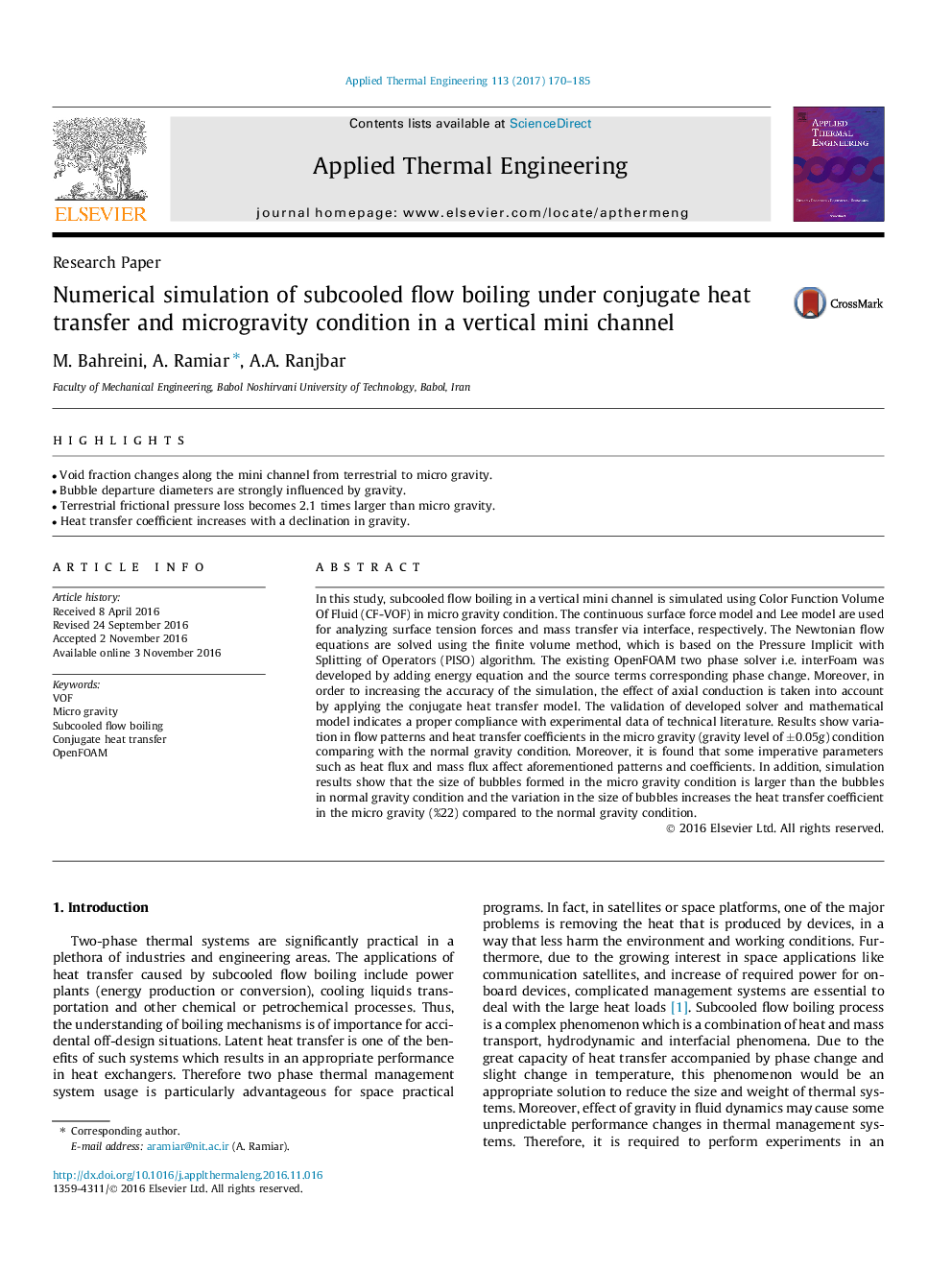| Article ID | Journal | Published Year | Pages | File Type |
|---|---|---|---|---|
| 4991796 | Applied Thermal Engineering | 2017 | 16 Pages |
â¢Void fraction changes along the mini channel from terrestrial to micro gravity.â¢Bubble departure diameters are strongly influenced by gravity.â¢Terrestrial frictional pressure loss becomes 2.1 times larger than micro gravity.â¢Heat transfer coefficient increases with a declination in gravity.
In this study, subcooled flow boiling in a vertical mini channel is simulated using Color Function Volume Of Fluid (CF-VOF) in micro gravity condition. The continuous surface force model and Lee model are used for analyzing surface tension forces and mass transfer via interface, respectively. The Newtonian flow equations are solved using the finite volume method, which is based on the Pressure Implicit with Splitting of Operators (PISO) algorithm. The existing OpenFOAM two phase solver i.e. interFoam was developed by adding energy equation and the source terms corresponding phase change. Moreover, in order to increasing the accuracy of the simulation, the effect of axial conduction is taken into account by applying the conjugate heat transfer model. The validation of developed solver and mathematical model indicates a proper compliance with experimental data of technical literature. Results show variation in flow patterns and heat transfer coefficients in the micro gravity (gravity level of ±0.05g) condition comparing with the normal gravity condition. Moreover, it is found that some imperative parameters such as heat flux and mass flux affect aforementioned patterns and coefficients. In addition, simulation results show that the size of bubbles formed in the micro gravity condition is larger than the bubbles in normal gravity condition and the variation in the size of bubbles increases the heat transfer coefficient in the micro gravity (%22) compared to the normal gravity condition.
